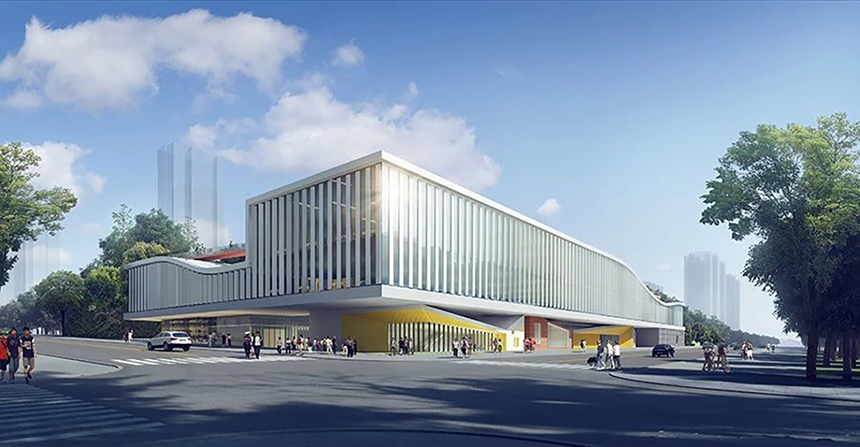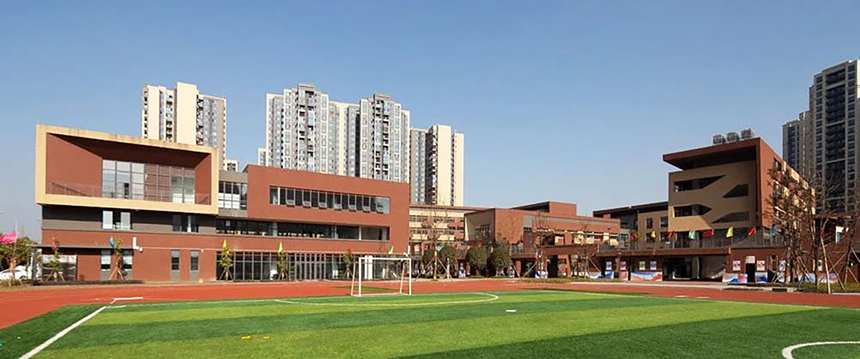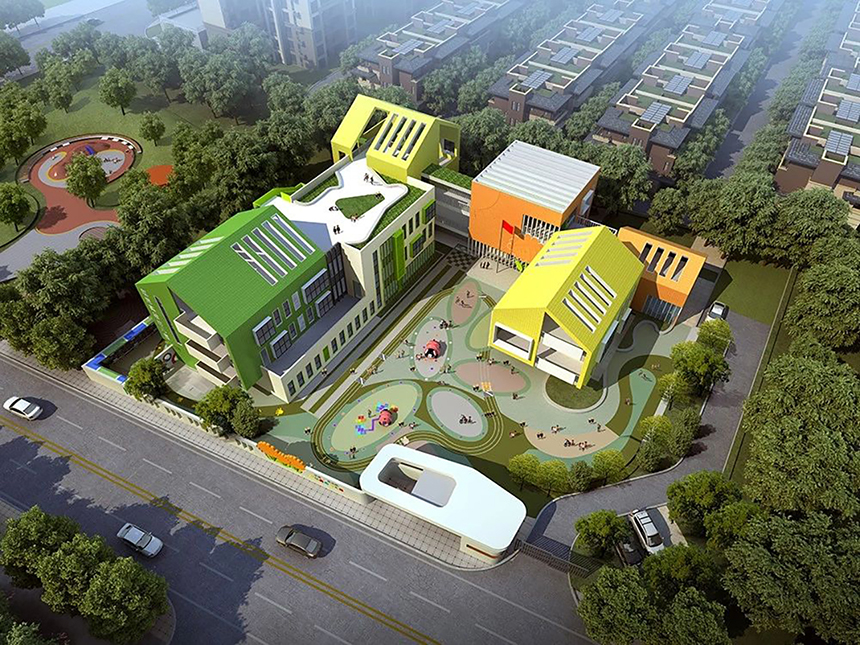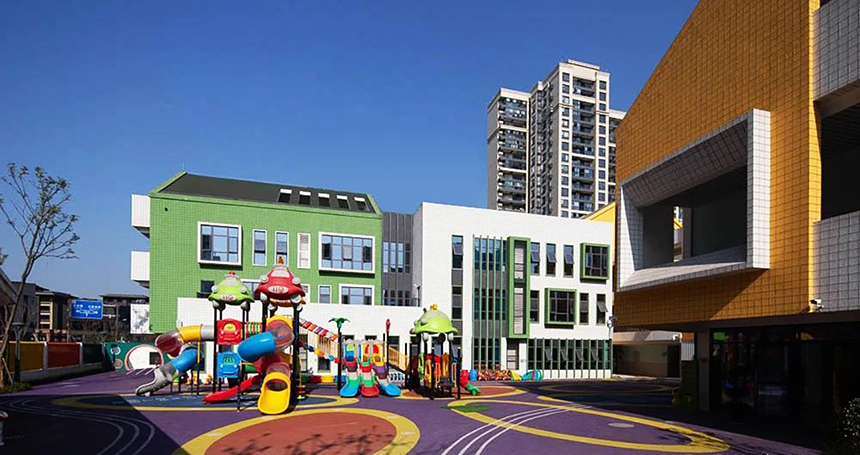For traditional educational buildings, most people's concepts still stay in enclosed walls. From overall planning to space design, only the standards of traditional architectural education regulations need to be met. This is a pity, even Known as the "severe classroom crisis."
Regarding the relationship between modern education and space, Zhubo adheres to its own propositions and viewpoints, aims to break the division of disciplines, pursue the free atmosphere of the school, and promote communication and interaction between students, and put forward the basic concept of "sharing, integration, and openness". The 12 educational buildings designed by Zhubo recently will be completed one after another. From international schools to primary and secondary schools and even kindergartens, they all present the modern characteristics of educational buildings.


Design team: Zhubo Design-Joint Public Design
Completion time: 2018
Building area: 43,000㎡
Land area: 69,000㎡
China Resources Xiaojingwan Bayside International School benefited from the natural conditions of its talent and is fundamentally different from the schools in the city. At the beginning of the concept, the architect tried to create a campus that blended with nature, and created a learning experience in the mountains and forests for students. Teachers and students can embrace the natural breeze and sing; read in the morning in the morning sun with the fresh fragrance of grass.


Design team: Zhubo Design-Joint Public Design
Design time: 2018
Building area: 46,000㎡
Land area: 15,000㎡
Jinan Huazhi Wanxiang Tiandi Besseth International School adopts the compact layout of the teaching complex, so that most of the functional blocks are covered under a large board with functions, and the functional blocks are closely connected through the large board to meet the needs of international schools. Shift demand. The green roof above the big slab continues the natural landscape of the hills and integrates with nature, providing a friendly fifth facade for the surrounding communities.

Design team: Zhubo Design-Joint Public Design
Design time: 2017
Building area: 82,000㎡
Land area: 17,000㎡
The Shekou campus of Besseth International School is one of the high-quality international schools in Shenzhen. It contains various functional buildings and facilities such as teaching, office, sports, and life. Since there are all residential areas near the base, the design strategy adopts the spatial form of the inner courtyard combination: the indoor large atrium carries the main vertical transportation function, the scattered public platforms provide students with undefined spaces for independent exploration and learning, and the outdoor atrium allows Nature and sunlight penetrate into the building more easily.


Design team: Zhubo Design-Joint Public Design
Completion time: 2018
Building area: 125,000 square meters
Land area: 110,000㎡
Peiwen Huizhou International School of Peking University has made new attempts in the main entrance and public space: the main entrance is designed to enter the indoor atrium space in the form of a "building complex", making the flow experience more biased towards service education. Exhibition hall; expand the single transportation space attributes of corridors and corridors into an open education space and become a "second classroom" for students.


Design team: Zhubo Design-Joint Public Design
Completion time: 2018
Building area: 52,400㎡
Land area: 31,500㎡
Cooperation unit: H DESIGN
The Longyuan School affiliated to Central China Normal University takes "creating a more natural and open teaching environment" as its starting point, and draws inspiration from the combination of corridors, courtyards, lanes and terraces in traditional Chinese architecture. Make full use to create a more colorful outdoor learning, living and interactive space. In a corner of the city's 100-meter high-rise building, there is a uniquely interesting, cascading green valley.

Design team: Zhubo Design-Joint Public Design, Zhubo Design-Urban Architecture Design Company
Design time: 2018
Building area: 76,000 square meters
Land area: 27,000㎡
The Affiliated Middle School of Sun Yat-Sen University takes "interconnection, open sharing" as the design concept, is committed to creating a unique "cloud" community platform campus, and uses a multi-dimensional "link" concept to connect the school with the city, the community, and the educational philosophy of China's top universities Link with advanced management experience, and strive to become the business card of the excellent educational environment and philosophy of Guangming District.


Design team: Zhubo Design-Joint Public Design, Zhubo Design-Urban Architecture Design Company
Design time: 2018
Building area: 85,000㎡
Land area: 40,000 square meters
The primary school affiliated to Sun Yat-Sen University pioneered a multi-dimensional shuttle system, using the underground shuttle island to liberate the transportation pressure of parents from the urban road interface and transfer it underground. Combined with the smart campus Internet of Things platform, time-sharing and intelligent management to ensure the convenience and efficiency of parent transportation and students It is safe and can be converted into community resources to give back to the society during the school's non-open hours.


Design team: Zhubo Design-Joint Public Design
Design time: 2018
Building area: 58,000㎡
Land area: 22,000㎡
Cooperation unit: Shenzhen Tianhua Architectural Design Co., Ltd.
In the Shenzhen Kukeng Middle School project, Zhubo Design put forward the concept of "time-based community sharing"-the school can open the runway, sports field, gymnasium, natatorium canteen and auditorium to the community after school and during winter and summer vacations. Reduce the vacancy rate of such functional spaces. After opening the physical boundaries of the school in time periods, the composite space will be utilized to the fullest to serve the entire community, making the originally closed campus a vibrant place.


Design team: Zhubo Design-Urban Architecture Design Company
Completion time: 2018
Building area: 51,000㎡
Land area: 20,000 square meters
Cooperation unit: Lianhe Avenue Architectural Design (Consulting) Beijing Co., Ltd.
The building breaks the traditional educational building with its unique shape. The teaching building is arranged in a ring shape, reflecting the school's complete sense of integrity. In the internal layout of the school, it creates rich emotions, giving children a rich sense of vision and a suitable place for communication. Through the design of the building space, every place is a learning place to meet the needs of children to learn anytime and anywhere.


Design team: Zhubo Design-Chengdu Branch
Completion time: 2018
Building area: 20,000 square meters
Land area: 37,000㎡
Chengdu Vanke Fifth City Shuangliu School is located in Jiujiang Street, Shuangliu District, Chengdu. As the main educational supporting facilities for large living communities, it has a great influence on the area. The architect designed a double-layered corridor under the condition of limited land use to fully excavate the open space. The sight corridor extending from the main entrance becomes the central vitality axis, connecting various functional groups in series, and through the creation of landscape and space, the overall image of the school has been improved.


Design team: Zhubo Design-Chief Architect Office
Design time: 2018
Building area: 6,100㎡
Land area: 5,300㎡
Foshan Poly Heguang Garden Kindergarten, on the basis of maximizing the use of south-facing landscape resources, provides children with multiple activity spaces through raised activity platforms, small-scale childlike facades, and connected circular walkways, creating a "floating child Fun Paradise".


Design team: Zhubo Design-Chengdu Branch
Completion time: 2018
Building area: 2,400㎡
Land area: 4,000㎡
The design is inspired by the small house in the fairy tale world. The original intention of the design is to build a "paradise" for children from the perspective of children and use childlike architectural language. Disperse and flexible layout to form a building that is more in line with children's scale; ordinary flat roofs are interspersed with partly hollow sloped roofs to increase the diversity of activity spaces and ensure sufficient sunlight and natural transition of the space; the building colors are lively and bright colors, and the facade paintings are embellished , Increase interest.